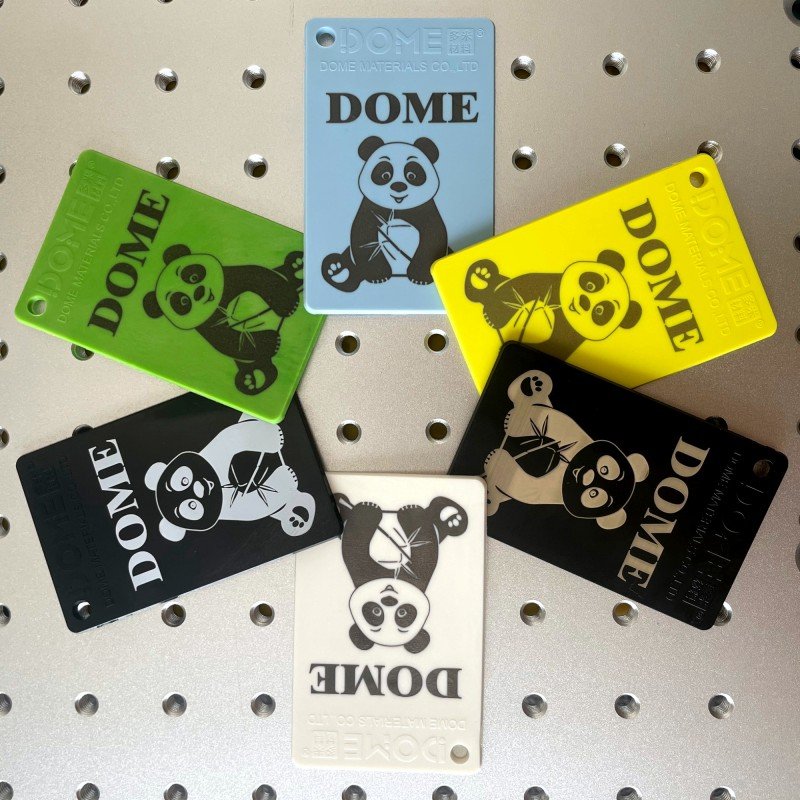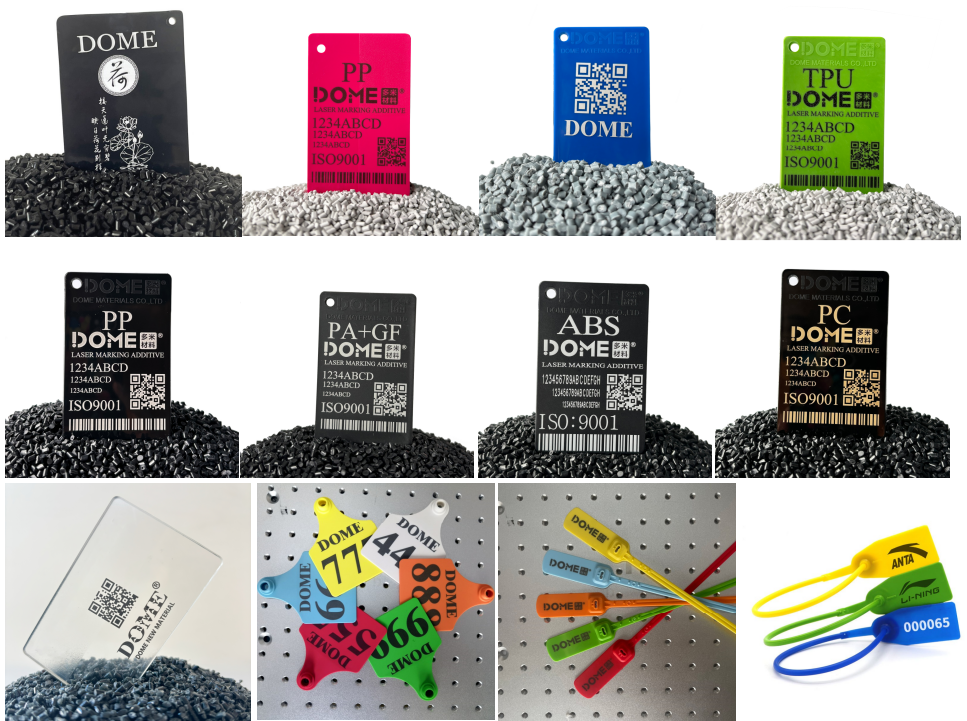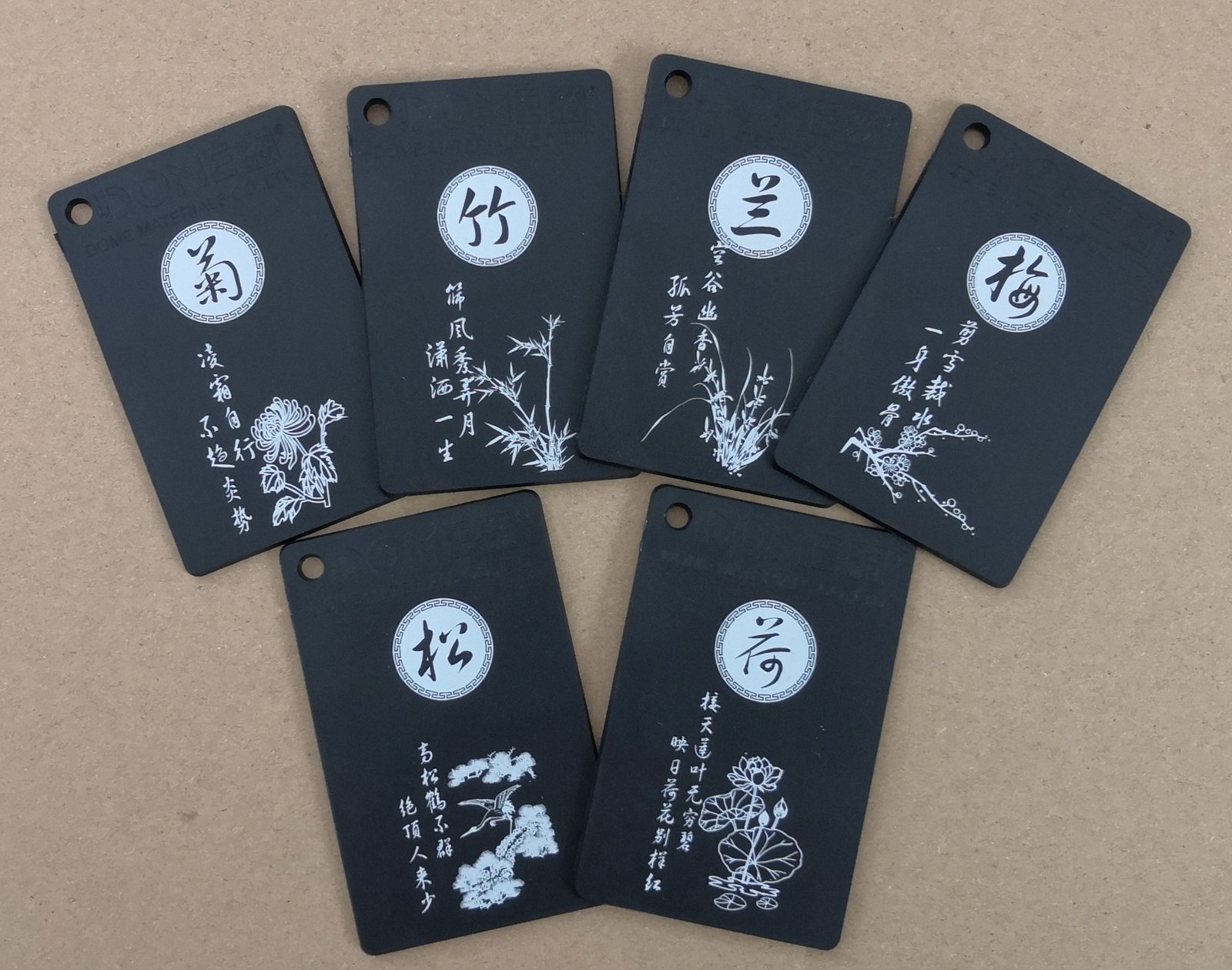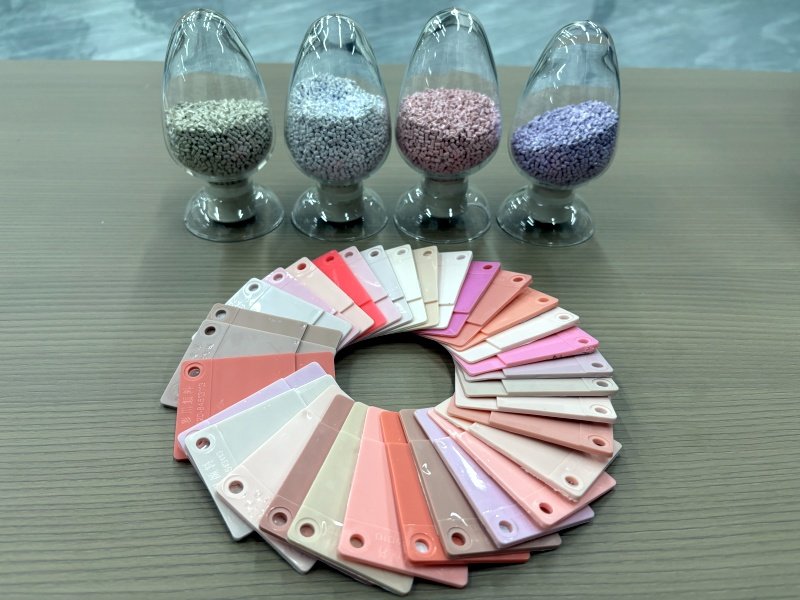Introduction
In the industrial manufacturing sector, traceability and labeling requirements for plastic products are growing rapidly. Whether it’s identity information on TPU livestock ear tags, anti-counterfeiting codes on plastic seals, or brand logos on home appliances, clear and long-lasting laser marking has become essential. However, traditional plastics often face challenges like low contrast and blurred marks during laser engraving. This is where laser marking additives shine—optimizing plastic surface properties through scientific formulations enables efficient and precise laser marking for modified plastics, injection-molded parts, and more.

Why Do Plastic Products Need Laser Marking Additives?
Conventional plastics (e.g., PP, PE, ABS, TPU) exhibit low laser absorption rates, leading to issues such as:
- Poor Legibility: Insufficient color contrast for readable information;
- Inefficiency: Repeated engraving cycles increase energy consumption and time costs;
- Material Damage: High-power lasers may scorch surfaces, compromising product integrity.
By incorporating laser marking additives, plastics gain enhanced laser sensitivity, enabling “low-power, high-precision” marking while preserving mechanical strength and weather resistance.
Core Advantages of Laser Marking Additives
- High-Contrast Marking
Additives react with lasers to form stable, crisp dark or light marks (e.g., black/white contrast), ideal for QR codes, serial numbers, and intricate logos. - Broad Compatibility
Suitable for TPU, PP, PE, PC, ABS, and more, meeting diverse material needs for plastic modifiers and injection molders. - Durability in Harsh Conditions
Marks resist friction, high temperatures, and chemicals, ensuring longevity for outdoor applications like livestock ear tags and cable identifiers. - Eco-Friendly Compliance
RoHS-certified and free of heavy metals, ideal for medical devices and food packaging.

Applications & Industry Use Cases
- TPU Livestock Ear Tags & Plastic Seals
Laser-marked RFID ear tags withstand UV exposure and abrasion, enabling reliable tracking in agriculture. Explore high-performance additives for TPU applications on Alibaba’s product page. - Electronics & Home Appliance Housings
Achieve contamination-free logos and specifications on devices. Learn how additives replace ink printing in this guide to laser-safe plastics. - Medical & Packaging Industries
Permanent marks on HDPE/PET comply with FDA standards. Discover medical-grade solutions from trusted suppliers like Laser Additive Technologies. - Industrial Components & Cable Marking
Ensure traceability for automotive parts and wire harnesses. For bulk orders, visit Alibaba’s dedicated product listings.
How to Choose the Right Laser Marking Additive?
Key factors include:
- Laser Compatibility: Match wavelengths (e.g., 1064nm fiber lasers, 355nm UV lasers);
- Dosage: Typically 0.1%–3% without affecting material properties;
- Color Options: Select additives for black, white, or custom hues;
- Certifications: Prioritize ISO or REACH-compliant suppliers.
Conclusion
As Industry 4.0 drives smart manufacturing, laser marking is replacing traditional methods. By integrating laser marking additives, plastic manufacturers and injection molders can enhance product value and meet global demands for eco-friendly, high-precision identification.
Contact Us today for tailored solutions for TPU, PP, ABS, and other materials—empower your plastics to stand out in competitive markets!





